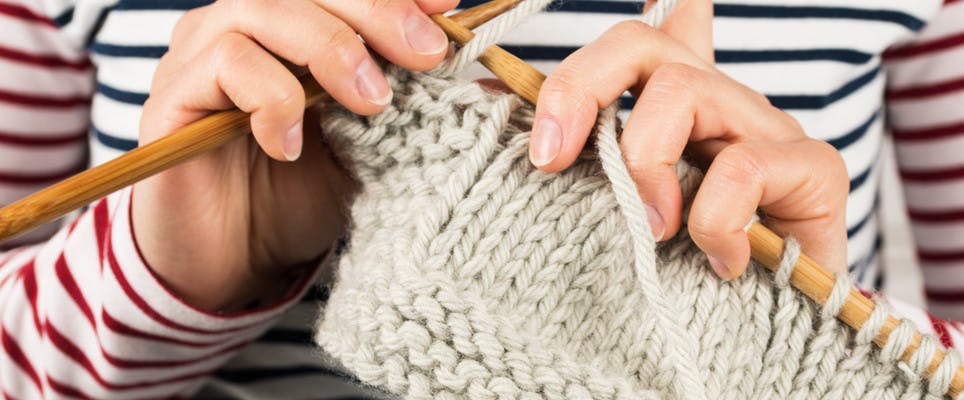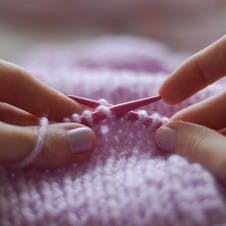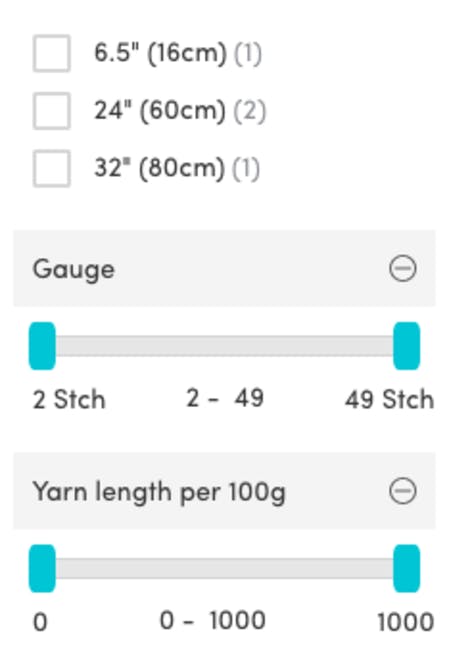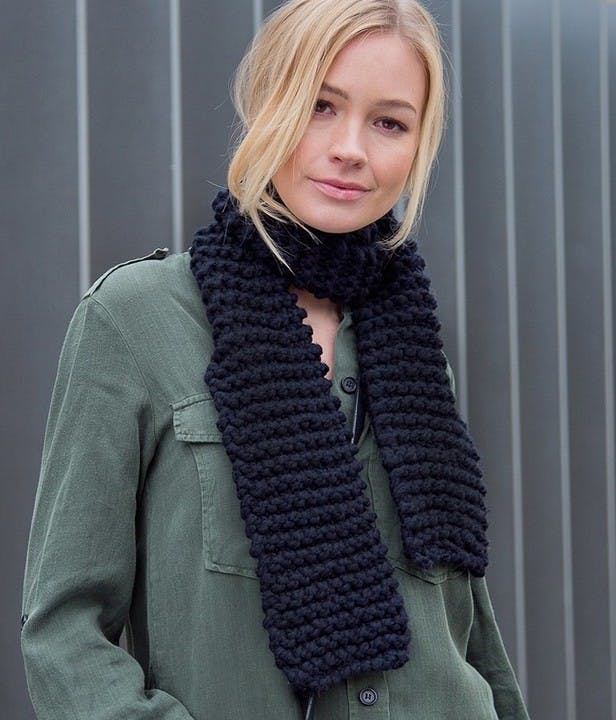Knitting tension for beginners
Published on 25 November 2013 By Emma 3 min read
Understanding tension is a great next step for a beginner knitter after mastering those first stitches. In this guide we'll talk you through why tension matters and the factors which determine tension in your knitting project.
What is tension?
In knitting, tension or gauge is simply a description of how tight the knitted stitches are. It affects the size, thickness, density and hang of your knitting and is largely determined by three things:
1

Knit on big chunky needles and your stitches will be large, making your finished garment loose-knit and floppy. Switch to a much thinner knitting needle and you’ll immediately see that your stitches are much smaller, making your knitting quite dense and in extreme cases, a lot less flexible.
2

Holding the Yarn
Many new knitters pull the yarn much too tight while learning. This makes it much harder to knit the next row: it’s difficult to slide the stitches up and down the needle and hard to get the point of the needle into a stitch if there’s no room in there! More importantly, it will also affect how the finished project looks: if your knitting is too tight it may curl or crumple and it will certainly not be the size you expect.
Other knitters may not hold it tightly enough which as well as making the knitting quite difficult (try forming your new stitch when the working yarn is all loose and flopping everywhere), will result in knitted fabric that is quite loose and open and larger than you would expect.
3

Yarn thickness
If the yarn you use is thicker or thinner than the one the pattern is written for, your tension will be different, and the finished item will not be the size you intended!
Why does knitting tension matter?
Achieving constant tension is one of the most common challenges for a beginner knitter; until this hurdle is overcome the knitting may look lumpy as stitches get bigger and smaller throughout, so just keep practising and you'll get there in the end.
Tension has significant effects on a knitted garment. The first and most obvious is size. Knitters use something called a tension square or swatch to determine what tension they are knitting. This is simply a 10cm (4″) square of knitting. Count how many stitches there are along a horizontal edge and how many rows along a vertical edge (this can be tricky with garter stitch; each ridge is two rows). The tighter you knit, the more stitches/rows there will be in your square. It’s easy to see how this affects the finished size of your project: if a pattern calls for 100 rows with a tension of 20 rows in a 10cm square, then it should measure 50cm. If you’re actually knitting 40 rows in 10cm your finished product will look quite different!
Tension will also affect the feel of the knitted fabric: how thick it is, whether the stitches are loose or dense, how the fabric hangs and drapes.
If your project will be blocked after knitting it’s sensible to block your tension square the same way: blocking can significantly change tension.

How can you get the tension of your knitting right?
Firstly, practice! Begin with projects where the tension doesn’t matter: simple scarves, stretchy items, loose-fitting garments. Pay attention to your tension as you knit, and try to hold the yarn with a constant tension so that your knitting is consistent.
Second: once you have moved on to garments where tension is important, ALWAYS KNIT A TENSION SQUARE. Using the yarn and needles recommended by the pattern, just knit until you have a square at least 10cm (4″) by 10cm, and then count the rows and stitches. If there are too many, your knitting is too tight and the finished product will be too small. If there are too few, you are knitting too loose and it will be too big. You can try adjusting the way you hold your yarn – many ‘tight’ knitters turn out to be knitting in a very uncomfortable position and loosening up a bit will feel a lot better. But if you’re comfortable with the way you’re knitting you could just change the needle size. If your knitting is too tight, go up a needle size to make your stitches bigger; vice versa if your knitting is too loose.
Finally: As you gain confidence knitting, you may want to substitute a different yarn from the one recommended by the pattern. The most important thing to consider if you do this, is that the recommended tensions for the two yarns must be as similar as possible. This is where the gauge filter on our site really comes in handy. The slider on the left describes the number of stitches in 10cm (4″): adjust it so that it includes the tension you are looking for and a number one bigger or smaller. So if the yarn recommended for the pattern normally has a tension of 22 stitches, set the slider to 21-22 or 22-23 (sadly, it won’t work if you try 22-22).




